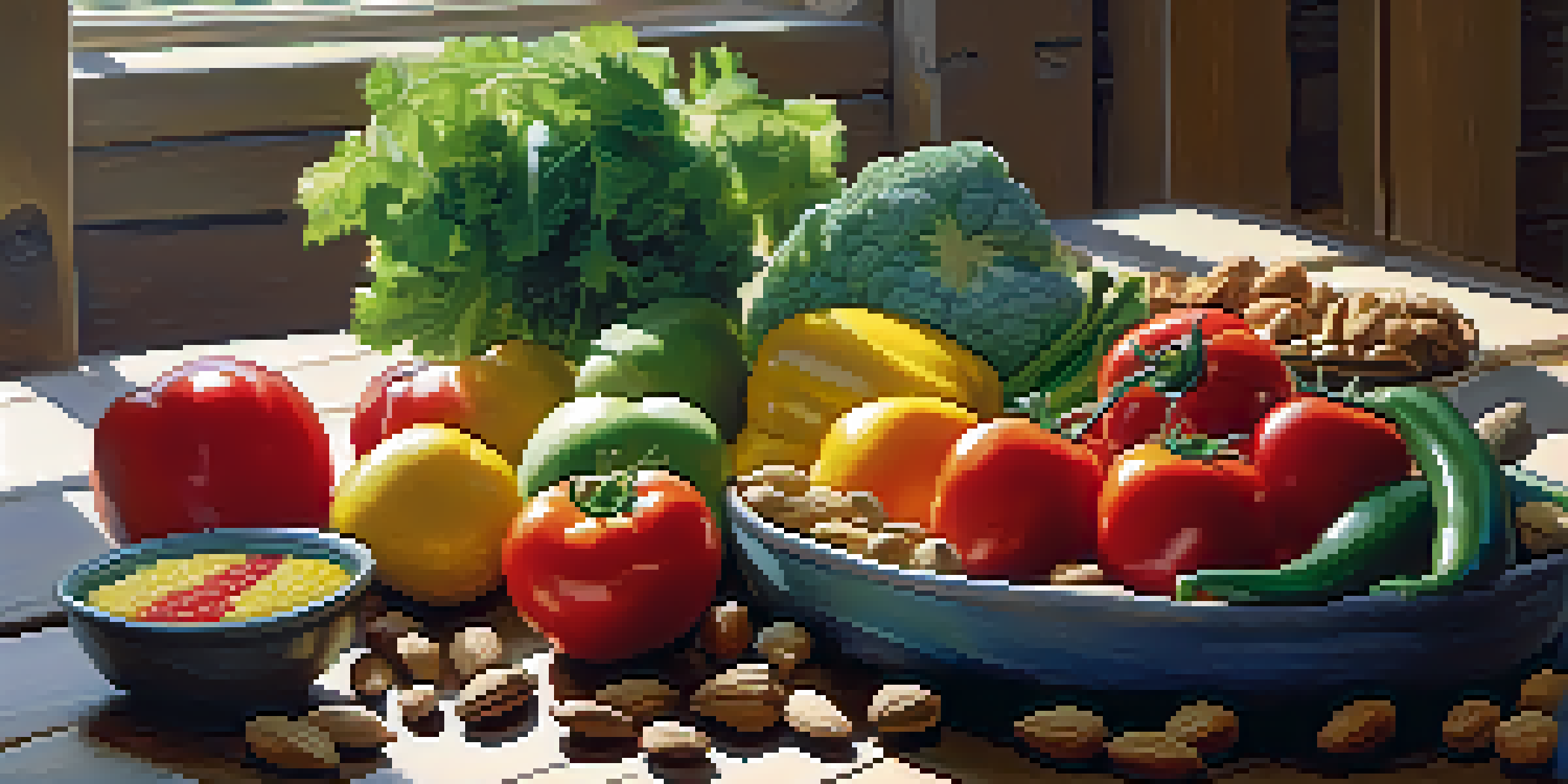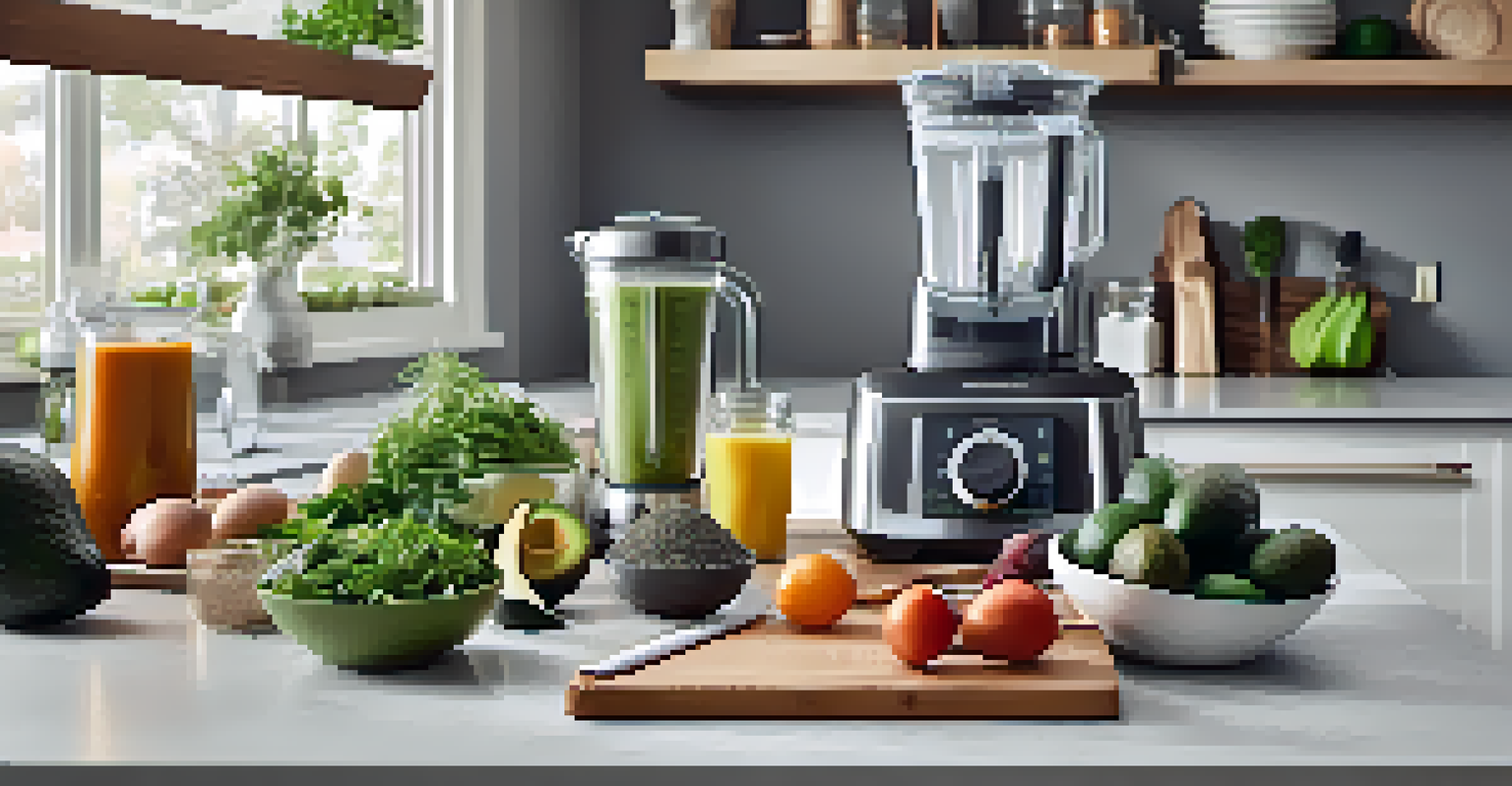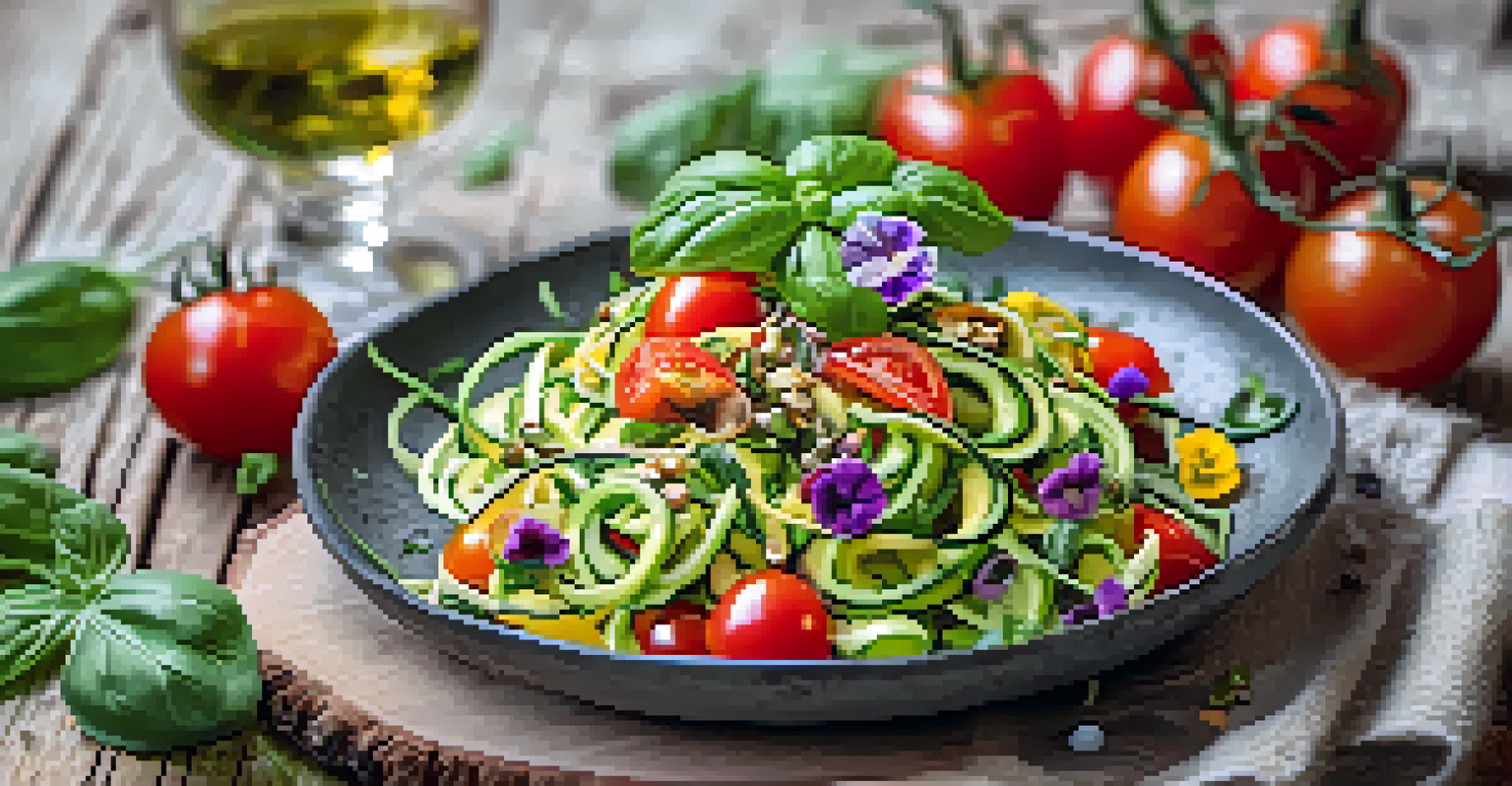Essential Guide to Creating Balanced Raw Food Meal Plans

Understanding Raw Food and Its Benefits for Health
Raw food refers to mostly unprocessed, uncooked plant foods like fruits, vegetables, nuts, and seeds. This lifestyle emphasizes the intake of fresh and nutrient-dense foods, which can boost your overall health. By consuming raw foods, you're often getting more vitamins, enzymes, and minerals that can be lost during cooking.
Let food be thy medicine and medicine be thy food.
Many people turn to raw food diets to enhance their energy levels, improve digestion, and support weight management. The vibrant colors and fresh flavors of raw foods can make meals exciting and appealing. Plus, this diet encourages mindful eating and a stronger connection to where your food comes from.
However, it's essential to balance your raw food intake to ensure you meet all your nutritional needs. This guide will help you navigate the complexities of creating a well-rounded raw food meal plan that supports a healthy lifestyle.
Key Nutrients to Include in Your Raw Food Diet
While raw food can be incredibly nutritious, it's important to focus on including a variety of nutrients. Key components include proteins, healthy fats, vitamins, and minerals. For instance, nuts and seeds are excellent sources of protein and healthy fats, while leafy greens provide essential vitamins like A, C, and K.

Additionally, don’t forget about fiber! Fruits and vegetables are rich in fiber, which is crucial for digestion and maintaining a healthy gut. Consider incorporating foods like avocados, chia seeds, and spirulina, which can significantly enhance your nutrient intake and overall meal balance.
Raw Food Boosts Health Benefits
Consuming raw foods enhances nutrient intake, supports energy levels, and promotes better digestion.
Keeping a diverse range of foods in your meal plan ensures that you're covering all bases nutritionally. This approach will not only help in maintaining energy levels but also keep your meals interesting and satisfying.
Building a Balanced Raw Food Meal Plan
Creating a balanced raw food meal plan starts with variety. Aim for a colorful plate by including different fruits and vegetables, which can provide a spectrum of vitamins and minerals. A good rule of thumb is to fill half your plate with vegetables and fruits, one-quarter with proteins, and one-quarter with healthy fats.
The food you eat can either be the safest and most powerful form of medicine or the slowest form of poison.
Consider planning your meals around the seasons, as this can inspire you to use fresh, local produce. For example, enjoy juicy berries in summer and hearty squash in autumn. This not only supports your health but also contributes to sustainability by reducing your carbon footprint.
Lastly, don't forget about portion sizes and eating frequency. Listening to your body's hunger cues is crucial in maintaining energy levels and avoiding cravings. A well-structured meal plan can help you stay on track and make eating raw enjoyable and sustainable.
Essential Tools and Equipment for Raw Food Preparation
Having the right kitchen tools can make a significant difference in your raw food preparation. Essential items include a high-quality blender, food processor, and spiralizer. These tools can help you create everything from smoothies to raw pasta, making your meal prep more efficient and enjoyable.
Investing in good storage containers is also vital. Since raw meals often include fresh ingredients, having BPA-free containers can help you preserve their nutrients longer. This way, you can prep meals in advance and enjoy the convenience of grabbing healthy options when you're short on time.
Balance Nutrients in Your Diet
Incorporating a variety of proteins, healthy fats, vitamins, and minerals is essential for a well-rounded raw food meal plan.
Lastly, don’t underestimate the power of a good knife set. Properly chopping your ingredients not only enhances the presentation of your meals but also ensures even blending and mixing. With the right tools, creating balanced raw meals can become a fun and creative process.
Incorporating Variety with Raw Food Recipes
Variety is the spice of life, especially when it comes to raw food! Exploring different recipes can keep your meals fresh and exciting. Think beyond salads—try making raw tacos using lettuce leaves, or indulge in a raw dessert made from blended nuts and dates.
Experimenting with flavors and textures is essential. Consider adding herbs and spices to enhance the taste of your raw dishes. For example, a sprinkle of cumin can elevate a raw vegetable salad, while fresh basil can add a delightful twist to your smoothies.
Don't hesitate to get creative in the kitchen. As you explore new recipes, you'll discover your preferences and develop a raw food repertoire that keeps you engaged and satisfied. Plus, sharing these recipes with friends and family can inspire them to try raw foods too!
Common Challenges and How to Overcome Them
Transitioning to a raw food diet can come with its fair share of challenges. Some people may struggle with feeling full or may experience cravings for cooked foods. It's important to listen to your body and adjust your meal plans as needed to ensure you're getting enough calories and nutrients.
Another common issue is the perceived complexity of meal prep. However, simplicity is key! Start with easy recipes and gradually incorporate more complex dishes as you become comfortable with the raw food lifestyle. Meal prepping on weekends can also help ease the burden during busy weekdays.
Stay Motivated on Your Journey
Joining a community and setting realistic goals can help you stay engaged and inspired in your raw food lifestyle.
Lastly, remember that it's okay to have cooked foods occasionally. Balance is vital for a sustainable diet. If you find yourself craving cooked meals, try incorporating more lightly steamed veggies or warm soups that still retain some raw elements.
Tips for Staying Motivated on Your Raw Food Journey
Staying motivated on your raw food journey can sometimes be a challenge. One effective way to maintain enthusiasm is to join a community, whether online or in-person. Engaging with others who share your passion can provide inspiration, support, and even new recipe ideas.
Setting realistic goals can also keep you focused. Instead of aiming for perfection, strive to incorporate more raw foods into your diet gradually. Celebrate your progress, no matter how small, and don't be too hard on yourself if you have setbacks.

Lastly, keep a food journal to track what you eat and how you feel. Reflecting on your journey can help you identify patterns and discover what works best for you. This practice not only fosters mindfulness but also helps you stay connected to your health and wellness goals.